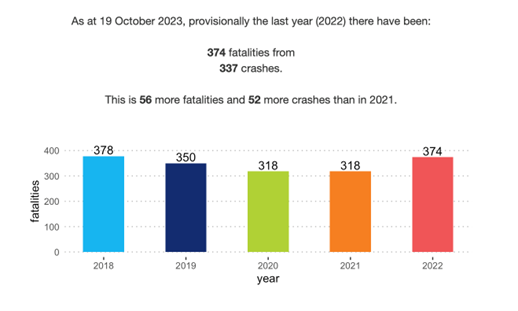
What happens when your drivers don’t pay attention
Fleet ManagementDistracted drivers are at an increased risk of being involved in an incident or collision. So, is your organisation doing enough to highlight the risks associated with distraction and curbing bad driving habits?
There is an almost endless supply of distractions when behind the wheel. Mobile phones, billboards and GPS systems are just some of the ways our attention can be taken away from safely controlling the vehicle we’re navigating. Likewise, with more vehicles than ever on our roads, factors such as traffic snarls, travel time blowouts and poorly communicated road closures make it easy for drivers to get hot under the collar and turn to riskier driving behaviours to meet deadlines or punch the clock at the end of the day.

Behaviours like aggressive driving, speeding, using a mobile device, showing a lack of courtesy to others or a general disrespect for road laws have the potential to impact a driver’s safety. Not to mention, when your logo’s prominent on a vehicle zigzagging across multiple lanes at high speed, cutting other vehicles off in traffic, or abusing other road users, it reflects poorly on your organisation’s reputation.
Despite the work of road safety authorities and the governments, avoidable road deaths continue in New Zealand.

Source: transport.govt.nz
Your drivers need to understand that risky driving not only puts everyone’s safety in jeopardy; it will cost them. There are hefty fines and demerit points for drivers who flout road laws or allow themselves to be distracted. Enough offences will result in a suspended licence, which means they’d be unable to work and could lose their jobs altogether. But that’s only if they’re ‘lucky’.
As study after study shows, speeding and distracted drivers are far more likely to be involved in a collision that results in permanent injury or death than road users paying attention and observing the posted speed limit.

At its most dangerous, bad driving could lead to somebody paying the ultimate price: the death of an employee or other road users. At-fault drivers face being charged by the police with a range of extremely serious offences that will change their lives and those of their families forever.
Simply put, there is a lot that can happen when drivers don’t pay attention.
Know your responsibilities: employers and employees
For employers, ongoing training and assessment is a vital part of keeping employees on top of company policies when it comes to road safety and driving. Additionally, companies have an obligation to ensure their policies and procedures support – and reward – safe driving.
It’s good form to recruit and reward drivers who demonstrate the right attitude behind the wheel from the onset, and that employees are trained to know what’s expected of them as a driver representing their organisation. Equally, employees have an obligation to meet and exceed these expectations every working day. Drivers need to stay updated on the laws that apply to them.
Your drivers need to understand that they may be driving your company’s vehicle, but ultimately. they will be responsible for any fines or infringement notices they might incur. For example, as any heavy vehicle driver will tell you, a daily inspection of the vehicle’s lights (including braking, trailer and reverse lights), turn signals, tyre depth/tread wear, oil and coolant levels are a mandatory part of their workday.
Once the vehicle leaves the depot or warehouse, the person behind the wheel is responsible for any fines – “my boss was supposed to fix it” won’t cut it when the police pull you over. If your policies as an employer don’t support your employee’s right to refuse the use of an unsafe vehicle, then it might be time to review your policies.
At both ends of the relationship, employers and employees need to work together concerning best-practice standards when it comes to managing their working day, and how they use devices like telematics, sat nav devices and mobile devices. As useful as it may be, technology can be a source of distraction, and distraction is a major contributor to motor vehicle accidents.

What you should take away from these laws
An organisation’s drivers are an extension of that workplace – the way they drive reflects directly on their employer. Having a set of policies in place that dictate the use of driver aids and establishing a set of safe driving skills and behaviours are important steps for ensuring distractions behind the wheel are minimised. They may be a pain to follow but it’s in everyone’s best interest to adhere to them.
The range of penalties that drivers could face for that momentary lapse of judgement and concentration have life-long implications for not only employees and employers but their families as well.
Let’s watch out for each other.

Talk to SG Fleet to find out what you can do to make your organisation safer on the roads.
 Driving Insights
Driving Insights




